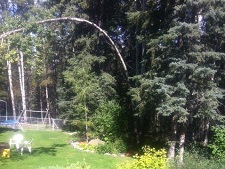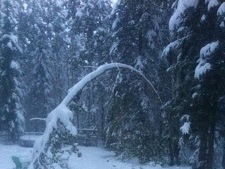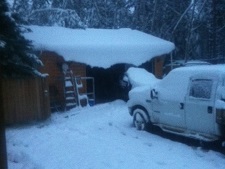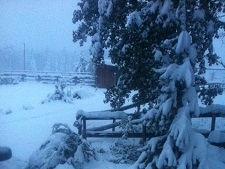Canada's top 10 weather stories for 2014: chapter 10
10. “Snowtember” in Calgary
Snow in September is not rare in Calgary. After all, residents boast that theirs is the largest Canadian city with snow falling every month. But even longtime Calgarians were shocked on September 7 when - in the midst of a sunny 25°C afternoon - they learned the next day’s forecast called for freezing temperatures and upwards of 10 cm of snow, with snowfall warnings in effect for a large swath of southern Alberta. And snow it did! For the next three days, Calgary was battered by foul wintry weather that swapped sweat for slush as a 25-degree drop in temperature took hold.

A significant layer of Arctic air, mixed with moisture in unstable air, engulfed Calgary and surrounding areas. When the air was driven upslope over the foothills, even more frozen precipitation appeared. At Calgary International Airport, the three-day snowfall totalled 28.2 cm with amounts between 40 and 45 cm occurring over western portions of the city.

The storm’s snowfall was the highest September deposit before the autumn equinox in the last 130 years. And to occur prior to a killing frost and so early in September, when average temperatures range between 18.8°C for daytime highs and 5.2°C for nighttime lows, was highly unusual. In the last six years, Calgary has only seen snow in September on September 17, 2010 when a meager 0.2 cm fell.

The heavy wet snow created huge traffic problems for drivers and inflicted extensive property damage. Trees still flush with green leaves bowed, sagged and snapped from the weight of the sticky snow and fell onto power lines, vehicles and roads, wreaking havoc across the city. When compared with the debris left from last year’s flood, the snowfall’s impact included thousands more kilograms of vegetative debris at landfills, city drop-off zones, parks and private properties.

Similarly, widespread power outages - which at one point affected up to 74,000 homes and businesses - affected more than two and a half times the number of customers who lost power during last year’s flood and emergency services responded to twice the number of calls (a record 27,000 calls in 72 hours). Outside Calgary, from Red Deer to High River, farmers braced against killing frost and heavy, wet snow that beat down crops, smashed stalks and muddied fields with less than one quarter of harvesting completed. Most had to wait until everything dried before getting back on their combines.